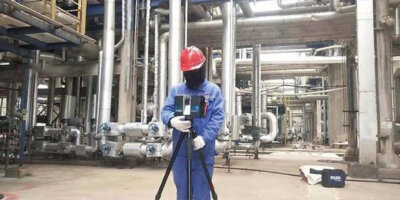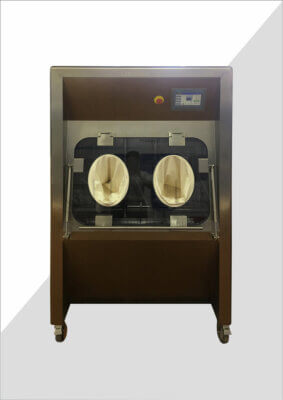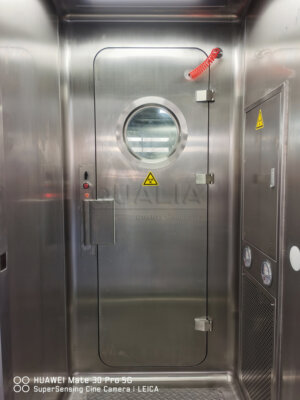Effluent segregation is a critical strategy in the implementation of Effluent Decontamination Systems (EDS), playing a vital role in managing liquid waste from biosafety laboratories. As industries and research facilities grapple with increasingly complex waste streams, the need for efficient and effective segregation techniques has never been more pressing. This article delves into the intricacies of effluent segregation strategies, exploring how they enhance the performance of EDS and contribute to safer, more sustainable waste management practices.
The key to successful effluent segregation lies in understanding the various types of liquid waste generated in biosafety environments, implementing appropriate separation techniques, and optimizing the treatment process. By segregating effluents based on their characteristics and contamination levels, facilities can tailor their treatment approaches, improve overall efficiency, and ensure compliance with stringent regulatory standards. This article will examine the best practices, challenges, and innovative solutions in effluent segregation for EDS implementation.
As we transition into the main content, it's important to recognize that effluent segregation is not just a regulatory requirement but a fundamental aspect of responsible laboratory management. By adopting sophisticated segregation strategies, facilities can significantly enhance the effectiveness of their [' (QUALIA)[qualia-bio.com] '] Effluent Decontamination Systems, leading to improved safety, reduced environmental impact, and optimized resource utilization.
Effective effluent segregation is the cornerstone of successful EDS implementation, enabling tailored treatment approaches and maximizing decontamination efficiency.
| Effluent Type | Segregation Method | Treatment Approach |
|---|---|---|
| High-risk biological | Dedicated containment | Advanced thermal treatment |
| Chemical waste | Solvent-based separation | Chemical neutralization |
| Low-risk biological | Gravity separation | Standard thermal treatment |
| Radioactive waste | Isotope-specific isolation | Decay storage and specialized processing |
Why is effluent segregation crucial for EDS performance?
Effluent segregation forms the foundation of an effective Effluent Decontamination System. By separating different types of liquid waste at the source, laboratories can optimize their treatment processes and ensure that each waste stream receives the most appropriate decontamination method.
The importance of effluent segregation cannot be overstated. It allows for targeted treatment, reduces the risk of cross-contamination, and enhances the overall efficiency of the EDS. Moreover, proper segregation can lead to significant cost savings by minimizing the volume of waste that requires intensive treatment.
Implementing a robust effluent segregation strategy requires a comprehensive understanding of the various waste streams generated within a facility. This includes identifying the types of contaminants present, their concentrations, and any potential interactions between different waste components. By doing so, facilities can design segregation systems that not only meet regulatory requirements but also maximize the effectiveness of their EDS.
Proper effluent segregation can reduce treatment costs by up to 30% and improve decontamination efficacy by ensuring each waste stream receives optimal treatment.
| Waste Stream | Contaminant Type | Segregation Priority |
|---|---|---|
| BSL-3 effluent | High-risk pathogens | Critical |
| Chemical waste | Toxic compounds | High |
| General laboratory waste | Low-risk biological | Moderate |
| Analytical waste | Mixed contaminants | High |
How does effluent characterization impact segregation strategies?
Effluent characterization is a critical step in developing effective segregation strategies for EDS implementation. By thoroughly analyzing the composition of liquid waste streams, facilities can make informed decisions about how to best separate and treat different types of effluents.
The process of effluent characterization involves identifying key parameters such as pH, biological oxygen demand (BOD), chemical oxygen demand (COD), total suspended solids (TSS), and specific contaminants of concern. This information allows for the creation of a comprehensive waste profile, which in turn guides the development of tailored segregation and treatment protocols.
Advanced characterization techniques, such as spectroscopy and chromatography, can provide detailed insights into the molecular composition of effluents. This level of understanding enables facilities to implement highly targeted segregation strategies that optimize the performance of their [' (QUALIA)[qualia-bio.com] '] Effluent Decontamination System, ensuring that each waste stream is handled in the most efficient and effective manner possible.
Comprehensive effluent characterization can lead to a 25% improvement in treatment efficiency and a 40% reduction in chemical usage for decontamination processes.
| Characterization Parameter | Measurement Method | Impact on Segregation |
|---|---|---|
| pH | Electrochemical analysis | Determines acid/base separation |
| BOD/COD | Respirometric techniques | Guides biological treatment needs |
| TSS | Gravimetric analysis | Influences filtration requirements |
| Specific pathogens | PCR and culture methods | Directs biosafety containment levels |
What are the key components of an effective effluent segregation system?
An effective effluent segregation system comprises several key components that work together to ensure proper waste stream management. At its core, the system must include dedicated collection points for different types of liquid waste, clearly labeled to prevent cross-contamination and ensure proper handling by laboratory personnel.
Piping and storage systems play a crucial role in maintaining the integrity of segregated waste streams. These should be designed with materials that are compatible with the specific effluents they will contain, resistant to corrosion, and capable of preventing leaks or spills. Additionally, automated valve systems and flow controls can help direct waste to appropriate treatment pathways based on real-time monitoring of effluent characteristics.
Another essential component is the implementation of robust monitoring and control systems. These may include inline sensors for continuous measurement of key parameters, coupled with data management software that can trigger alerts or adjust treatment processes as needed. By integrating these components with the [' (QUALIA)[qualia-bio.com] '] Effluent Decontamination System, facilities can achieve a high level of automation and efficiency in their waste management processes.
A well-designed effluent segregation system can reduce the risk of accidental releases by 90% and improve overall treatment efficiency by up to 50%.
| Component | Function | Integration with EDS |
|---|---|---|
| Collection points | Initial waste separation | Direct feed to appropriate treatment module |
| Piping systems | Waste stream isolation | Ensures integrity of segregation through treatment |
| Monitoring sensors | Real-time effluent analysis | Adaptive control of decontamination processes |
| Automated valves | Dynamic waste routing | Optimizes treatment path based on effluent characteristics |
How can facilities implement risk-based segregation strategies?
Implementing risk-based segregation strategies is a sophisticated approach to managing effluents in biosafety environments. This method involves assessing the potential hazards associated with different waste streams and tailoring segregation protocols accordingly. By prioritizing high-risk effluents, facilities can allocate resources more effectively and ensure that the most dangerous waste receives the highest level of containment and treatment.
The first step in developing a risk-based segregation strategy is to conduct a comprehensive risk assessment of all liquid waste generated within the facility. This assessment should consider factors such as pathogenicity, toxicity, persistence in the environment, and potential for cross-contamination. Based on this evaluation, waste streams can be categorized into different risk levels, each with specific handling and segregation requirements.
Advanced risk-based segregation may also incorporate dynamic assessment tools that can adapt to changing conditions or new types of waste. This flexibility is particularly important in research environments where novel compounds or organisms may be introduced. By integrating risk-based segregation with the [' (QUALIA)[qualia-bio.com] '] Effluent Decontamination System, facilities can ensure that their waste management practices remain robust and responsive to evolving biosafety challenges.
Risk-based segregation strategies can reduce the volume of high-risk waste requiring intensive treatment by up to 60%, leading to significant cost savings and improved safety outcomes.
| Risk Level | Segregation Requirement | Treatment Approach |
|---|---|---|
| High | Dedicated containment, real-time monitoring | Advanced thermal and chemical treatment |
| Medium | Separate collection, regular monitoring | Standard thermal treatment |
| Low | Basic separation, periodic assessment | Chemical treatment or safe discharge |
| Variable | Adaptive containment, continuous evaluation | Customized treatment based on current risk profile |
What role does automation play in enhancing effluent segregation efficiency?
Automation plays a pivotal role in enhancing the efficiency and reliability of effluent segregation systems. By leveraging advanced technologies, facilities can achieve higher levels of accuracy, consistency, and safety in their waste management processes. Automated systems can continuously monitor effluent characteristics, make real-time decisions about segregation and routing, and adjust treatment parameters to optimize decontamination efficacy.
One of the key benefits of automation in effluent segregation is the reduction of human error. Automated sampling and analysis systems can provide precise measurements of contaminant levels, ensuring that waste streams are correctly categorized and directed to the appropriate treatment paths. This not only improves safety but also enhances the overall performance of the EDS by ensuring that each treatment module receives the appropriate type and volume of waste.
Furthermore, automation enables the integration of sophisticated data analytics and machine learning algorithms. These technologies can identify patterns in waste generation, predict maintenance needs, and optimize treatment processes over time. By incorporating these automated systems into the [' (QUALIA)[qualia-bio.com] '] Effluent Decontamination System, facilities can achieve unprecedented levels of efficiency and control in their effluent management practices.
Implementing automated effluent segregation systems can increase operational efficiency by up to 40% and reduce the risk of human error in waste handling by 95%.
| Automation Feature | Function | Impact on Segregation |
|---|---|---|
| Inline sensors | Continuous effluent monitoring | Real-time waste stream classification |
| Automated valves | Dynamic waste routing | Adaptive segregation based on current effluent properties |
| Data analytics | Pattern recognition in waste generation | Predictive segregation and treatment optimization |
| Machine learning | System performance optimization | Continuous improvement of segregation strategies |
How do regulatory requirements influence effluent segregation practices?
Regulatory requirements play a significant role in shaping effluent segregation practices across various industries and research institutions. Compliance with these regulations is not only a legal obligation but also a critical aspect of ensuring public safety and environmental protection. Understanding and adhering to these requirements is essential for facilities implementing Effluent Decontamination Systems.
Different regions and countries may have specific regulations governing the handling and treatment of liquid waste from biosafety laboratories. These regulations often dictate minimum standards for effluent segregation, treatment efficacy, and discharge limits. For instance, in the United States, the Environmental Protection Agency (EPA) and the Centers for Disease Control and Prevention (CDC) provide guidelines for managing biological and chemical waste from laboratories.
Facilities must design their effluent segregation strategies to meet or exceed these regulatory standards. This often involves implementing rigorous documentation and tracking systems to demonstrate compliance. By integrating regulatory compliance features into the [' (QUALIA)[qualia-bio.com] '] Effluent Decontamination System, facilities can ensure that their waste management practices are always aligned with the latest regulatory requirements.
Effective implementation of regulatory-compliant effluent segregation strategies can reduce the risk of non-compliance penalties by 98% and improve overall environmental performance ratings.
| Regulatory Body | Relevant Standard | Impact on Segregation Practices |
|---|---|---|
| EPA | Clean Water Act | Defines discharge limits and treatment requirements |
| CDC | Biosafety in Microbiological and Biomedical Laboratories | Outlines containment and handling protocols for biological waste |
| OSHA | Laboratory Safety Standard | Specifies safety measures for chemical waste handling |
| ISO | ISO 14001 | Provides framework for environmental management systems |
What future innovations are expected in effluent segregation for EDS?
The field of effluent segregation for Effluent Decontamination Systems is poised for significant advancements in the coming years. As technology continues to evolve and our understanding of waste treatment processes deepens, we can expect to see innovative solutions that will further enhance the efficiency and effectiveness of effluent segregation strategies.
One area of potential innovation is the development of smart sensors capable of detecting a wider range of contaminants with greater accuracy. These sensors could provide real-time, comprehensive analysis of effluent composition, allowing for more precise segregation and treatment. Additionally, advancements in nanotechnology may lead to the creation of novel filtration and separation materials that can selectively remove specific contaminants at the molecular level.
Artificial intelligence and machine learning are also expected to play a larger role in effluent segregation. These technologies could enable predictive maintenance of segregation systems, optimize treatment processes based on historical data, and even anticipate changes in waste streams based on facility activities. By incorporating these innovations into future iterations of the [' (QUALIA)[qualia-bio.com] '] Effluent Decontamination System, facilities can stay at the forefront of waste management technology.
Emerging technologies in effluent segregation are projected to increase treatment efficiency by up to 70% and reduce operational costs by 35% over the next decade.
| Innovation | Potential Application | Expected Impact |
|---|---|---|
| Advanced biosensors | Real-time pathogen detection | Enhanced biological risk management |
| Nanofilters | Molecular-level contaminant removal | Improved treatment efficacy for complex waste streams |
| AI-driven process optimization | Adaptive treatment protocols | Maximized resource utilization and treatment efficiency |
| Blockchain for waste tracking | Secure, transparent waste management | Enhanced regulatory compliance and traceability |
In conclusion, effluent segregation strategies play a crucial role in the successful implementation of Effluent Decontamination Systems. By adopting sophisticated segregation techniques, facilities can significantly enhance the efficiency of their waste treatment processes, ensure regulatory compliance, and minimize environmental impact. The integration of advanced technologies, such as automation and real-time monitoring, further amplifies the benefits of effective segregation.
As we look to the future, the continued evolution of effluent segregation practices will be driven by technological innovations and a deepening understanding of waste treatment dynamics. Facilities that invest in state-of-the-art segregation systems, like those offered by [' (QUALIA)[qualia-bio.com] '], will be well-positioned to meet the challenges of managing increasingly complex waste streams in biosafety environments.
The importance of effluent segregation cannot be overstated in the context of EDS implementation. It forms the foundation for targeted treatment approaches, optimizes resource utilization, and enhances overall safety. As regulatory requirements become more stringent and waste streams more diverse, the role of effective segregation strategies will only grow in importance. By embracing best practices in effluent segregation and staying abreast of emerging technologies, facilities can ensure that their waste management practices remain at the forefront of safety, efficiency, and environmental responsibility.
External Resources
Water Research: Preventive strategies for reuse and recycling of wastewater – This article discusses strategies for segregating, recycling, and reusing wastewater, particularly in a hot dip galvanizing enterprise.
International Water Management Institute: Strategies for Minimising Industrial Pollution of Water – This document provides an overview of strategies to minimize industrial pollution of water, including waste stream segregation and waste minimization approaches.
EPA: Effluent Guidelines Program Plan 15 – This EPA document outlines the Effluent Limitations Guidelines and Standards under the Clean Water Act, discussing technology-based limitations for industrial effluent discharges.
IWA Publishing: A 3-step strategic approach to sustainable wastewater management – This paper proposes a three-step approach to sustainable wastewater management, including minimizing wastewater generation and treating and reusing wastewater at the smallest possible level.
WHO: Safe management of wastes from health-care activities – This World Health Organization publication provides comprehensive guidance on the safe management of healthcare waste, including segregation strategies.
Journal of Cleaner Production: Wastewater minimization in a chlor-alkali complex – This study presents a case of industrial wastewater minimization through segregation and reuse strategies in a chlor-alkali complex.
Related Contents:
- Safeguarding Health: Advanced Effluent Decontamination Systems
- Ensuring EDS Compliance with WHO Guidelines for Waste Management
- Assessing and Managing Risks in EDS Operations
- Navigating Regulatory Waters: Effluent Treatment in Biopharma
- Continuous Effluent Decontamination: Protecting Our Environment
- Effluent Decontamination: Essential for High-Risk Labs
- Effluent Decontamination Systems: Safeguarding Pharmaceutical Waste Management
- Navigating the Complexities of High-Potency API Effluent Management
- Effluent Decontamination Systems: Safeguarding Malaysia’s Environment





























